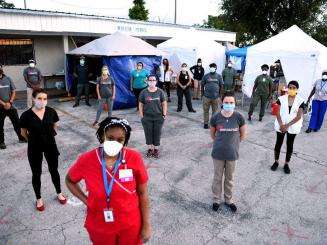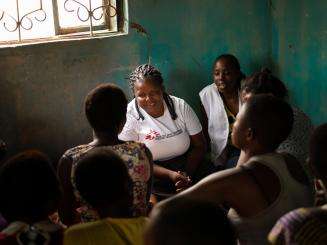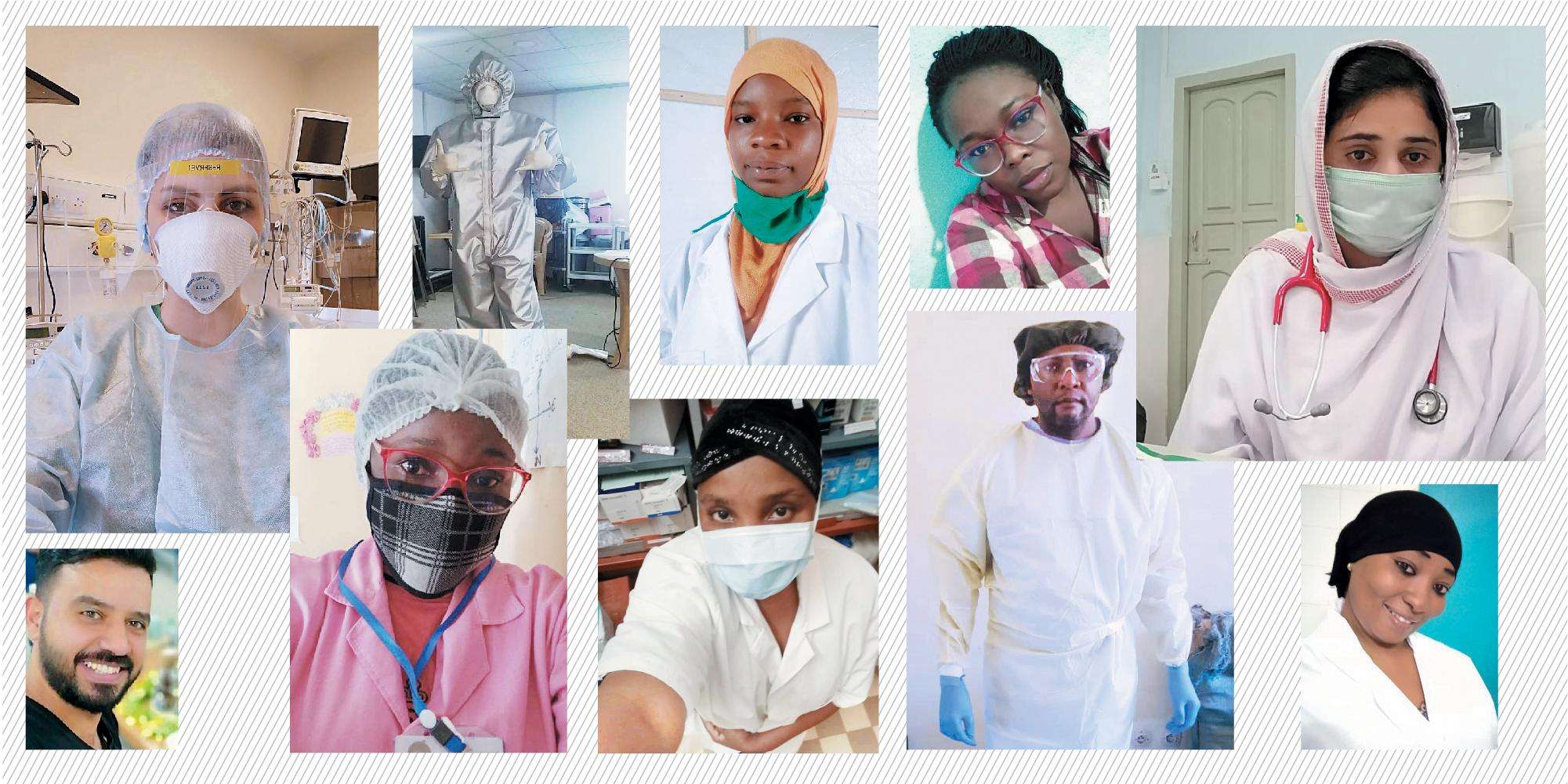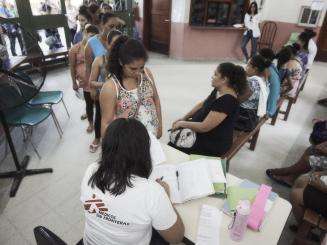Alert is a quarterly magazine published by Doctors Without Borders/Médecins Sans Frontières (MSF-USA) that features compelling stories and photography from our work around the world. Below is an excerpt from MSF-USA Board President Africa Stewart's introduction to the Summer 2020 issue (Vol 21. No. 2.), Nurses and midwives on the frontlines.
Dear friends,
This special issue of Alert marks the international year of the nurse and midwife—and what a grinding year it has been for frontline health workers in the midst of a pandemic.
I was raised by a surgical scrub technician who couldn’t go to nursing school. The reverence in her voice whenever she spoke of the nurses at work still rings in my ears. When she introduced me to a nurse, there was a change in tone that meant sit up straight, behave yourself. Nurses have that kind of power. Now, as an obstetrician, I have been lucky to learn from amazing nurses and midwives along the way. I still remember Tina—a nurse so tiny that she had to weigh down her pockets in order to donate blood. She was tiny and mighty to be sure. And she was always first to grab a sheet and belly up to the stretcher to move a patient in distress. We worked together during the crack cocaine crisis, when social workers carried newborns from the hospital into the foster care system. She showed me where we hid the clean clothes and toiletries for mothers experiencing homelessness. She taught me how to separate a patient from her abusive partner. And how to keep a patient overnight so that she could sleep through the night without fear. Tina showed us our privilege and how to give it away.
The killings of George Floyd, Breonna Taylor, and Ahmaud Arbery have us all thinking about power and privilege lately. In my own reflection, I am mindful of my role and the privilege it brings. How do I use my seat at the table to make MSF even better, even stronger, and more inclusive? How do we address the longstanding issues of structural racism as a public health crisis?
In this issue of Alert, you’ll learn about why we decided to launch temporary operations in the US in response to the unprecedented needs around the COVID-19 pandemic. It is no coincidence that many of our projects have served communities of color—including in New York City, Detroit, Florida, Puerto Rico, and working with Native Americans of the Southwest. The COVID-19 mortality rate for black people in the US is more than twice as high as the rate for white people. Researchers estimate that if the mortality rates were equal, some 17,000 black people would still be alive today.
With these disparities in mind, we are also taking a hard look at how to confront racism and discrimination within our own organization. We often celebrate the extraordinary diversity of our staff — with some 90 percent of our workforce coming from the local communities we serve. But we have more to do to tear down barriers that hinder the recruitment, retention, and advancement of people of color, and to ensure sustained diversity on MSF governance boards and in leadership positions. I am determined to use my term as board president to build an anti-racist organization while holding firm to our principles of impartiality, neutrality, independence, medical ethics, and bearing witness.
Around the world, MSF provides aid to the people who need it most, regardless of race or ethnicity. And we see patients every day who are victims of targeted attacks or who are denied access to health care simply because of who they are. In those settings I’ve learned from nurses and midwives how to just listen. Taking the time to listen to the problem can mean more to an individual than the cure. Those lessons were magnified when I accepted my first assignment with MSF and still resonate in this moment. I am still listening and learning, and I am grateful for your support of our work.
Sincerely,
Dr. Africa Stewart
August 21 01:37 AM
The emergency at home: Inside MSF’s unprecedented response to COVID-19 in the United States
Read More
August 21 05:55 AM
"The role of nurses is absolutely central to MSF"
A conversation with Patricia Carrick, nurse practitioner and MSF-USA vice-president
Read More
August 21 06:02 AM
Afghanistan: Massacre in a maternity ward
Honoring the victims of the attack on Dasht-e-Barchi hospital in Kabul
Read More





